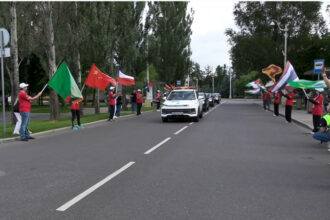The number of visitors to Abu Simbel since the beginning of 2017 registered a 160% increase, compared to the same period in 2016, according to Hossam Aboud, director of Abu Simbel Antiquities.
Aboud said that the number of visitors to the Abu Simbel temples during the current period exceeded 800 visitors a day, compared to only 300 visitors a day last year.
He added that the perpendicularity of sunlight on the face of the King Ramses II statue in Abu Simbel is to witness a heavy influx of foreign visitors—where their number is expected to reach 3,000, compared to 2,500 in 2016.
Aboud pointed out that the tourist occupancy rates in Abu Simbel—six floating hotels and 4 fixed hotels—reached 100%, and the city has received bookings of more than 400 Japanese tourists wanting to witness the aforementioned phenomenon.
He explained that most of the tourists visiting Abu Simbel are Japanese and Chinese, followed by the rest of the East Asian nationalities, as well as a small number of visitors from Europe.
According to Aboud, the Ministry of Antiquities in cooperation with the Ministry of Tourism and the Aswan governorate held a celebration to mark the 200th anniversary of the sunlight’s perpendicularity on the face of King Ramses II inside the temple. The celebration included the performance of 17 bands, nine of which were foreign.
They also held an exhibition—which will continue for another five months—at the hall of Abu Simbel temple, which features 50 images illustrating the stages of the temple’s discovery, as well as holding a light and sound show in the temple.
He said that the temple was discovered by Italian archaeologist Giovanni Belzoni. The phenomenon of the sun passing over the Abu Simbel temple is planned to be monitored by 12 Italian journalists and others from Germany, the Czech Republic, and other countries.
Hazem Fahmy, director of sales at the Steigenberger hotel in Luxor, said that the tourist movement from East Asian countries in general—especially the Chinese and Japanese markets—has increased since the beginning of 2017, causing a surge in occupancy rates at hotels, while tourist influxes from the European market is still somewhat weak.
He added that the occupancy rates in Luxor’s hotels increased by 15% compared to the same period last year, reaching 55% occupancy rates in hotels, compared to 40% in February 2016. He noted that there was a noticeable improvement in conference tourism as well.
He expected the improvement in tourist traffic to continue after the Scandinavian market lifted the travel ban to Egypt.
Tharwat El-Agamy, chairman of the Chamber of Tourism Companies and Agencies in Upper Egypt, said that the tourist occupancy rate in the Aswan and Luxor governorates did not exceed 20%, and is expected to reach a maximum of 30%, in conjunction with the celebrations of the sun passing directly over the Abu Simbel temple.
The number of tourists visiting Egypt in 2016 was 5.3 million tourists, compared to 9.3 million in 2015, a decline of 43%.




